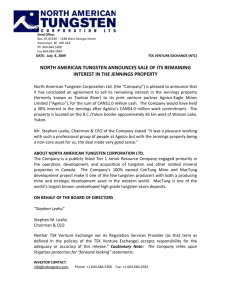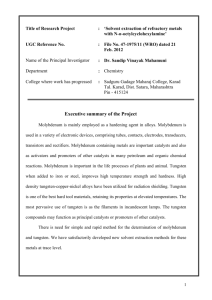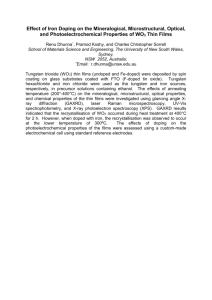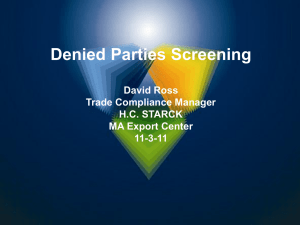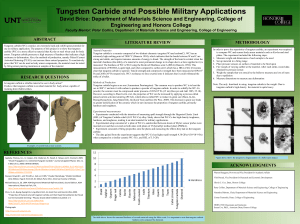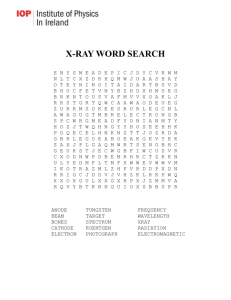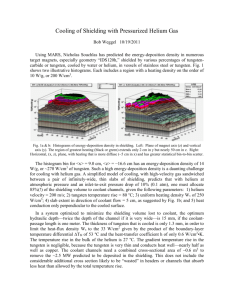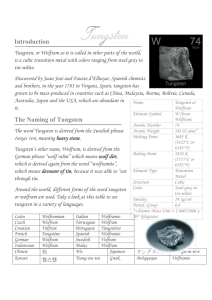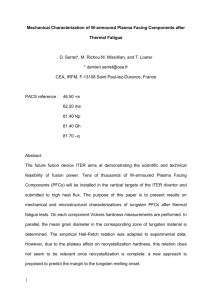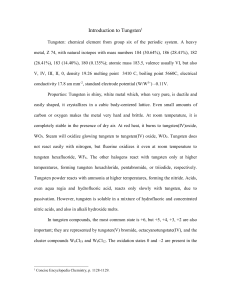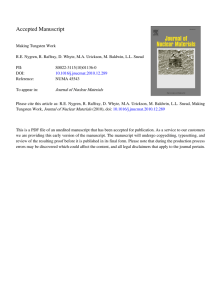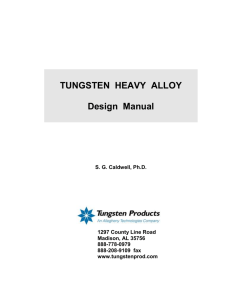in Large Helical Device - IAEA Atomic and Molecular Data Unit
advertisement
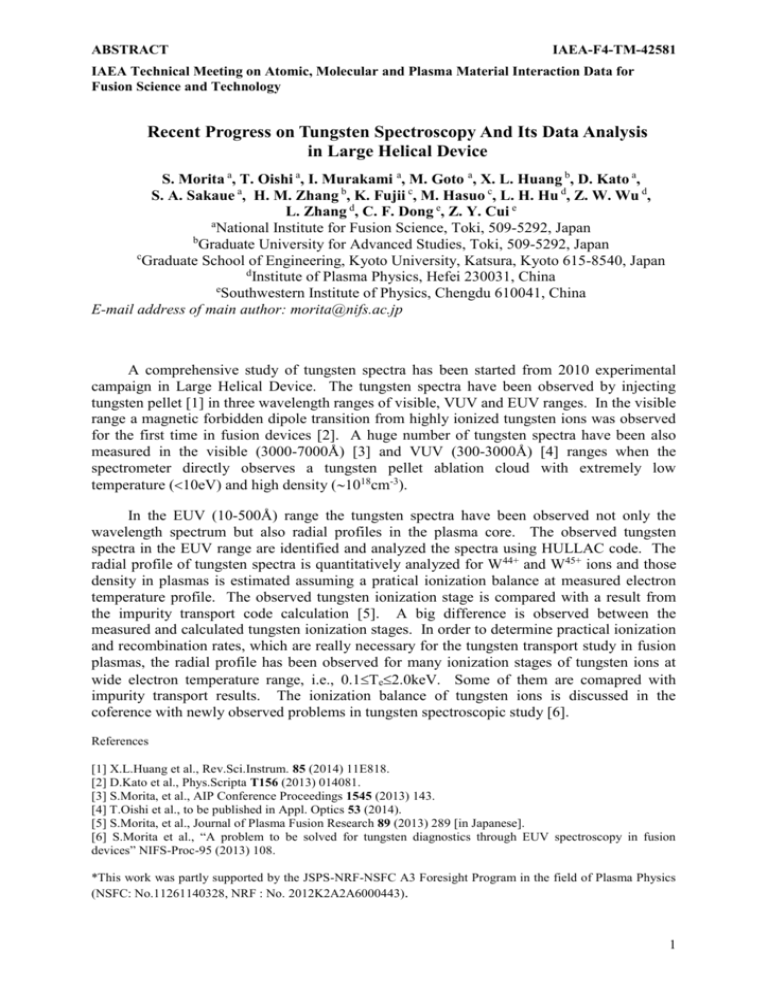
ABSTRACT IAEA-F4-TM-42581 IAEA Technical Meeting on Atomic, Molecular and Plasma Material Interaction Data for Fusion Science and Technology Recent Progress on Tungsten Spectroscopy And Its Data Analysis in Large Helical Device S. Morita a, T. Oishi a, I. Murakami a, M. Goto a, X. L. Huang b, D. Kato a, S. A. Sakaue a, H. M. Zhang b, K. Fujii c, M. Hasuo c, L. H. Hu d, Z. W. Wu d, L. Zhang d, C. F. Dong e, Z. Y. Cui e a National Institute for Fusion Science, Toki, 509-5292, Japan b Graduate University for Advanced Studies, Toki, 509-5292, Japan c Graduate School of Engineering, Kyoto University, Katsura, Kyoto 615-8540, Japan d Institute of Plasma Physics, Hefei 230031, China e Southwestern Institute of Physics, Chengdu 610041, China E-mail address of main author: morita@nifs.ac.jp A comprehensive study of tungsten spectra has been started from 2010 experimental campaign in Large Helical Device. The tungsten spectra have been observed by injecting tungsten pellet [1] in three wavelength ranges of visible, VUV and EUV ranges. In the visible range a magnetic forbidden dipole transition from highly ionized tungsten ions was observed for the first time in fusion devices [2]. A huge number of tungsten spectra have been also measured in the visible (3000-7000Å) [3] and VUV (300-3000Å) [4] ranges when the spectrometer directly observes a tungsten pellet ablation cloud with extremely low temperature (10eV) and high density (1018cm-3). In the EUV (10-500Å) range the tungsten spectra have been observed not only the wavelength spectrum but also radial profiles in the plasma core. The observed tungsten spectra in the EUV range are identified and analyzed the spectra using HULLAC code. The radial profile of tungsten spectra is quantitatively analyzed for W44+ and W45+ ions and those density in plasmas is estimated assuming a pratical ionization balance at measured electron temperature profile. The observed tungsten ionization stage is compared with a result from the impurity transport code calculation [5]. A big difference is observed between the measured and calculated tungsten ionization stages. In order to determine practical ionization and recombination rates, which are really necessary for the tungsten transport study in fusion plasmas, the radial profile has been observed for many ionization stages of tungsten ions at wide electron temperature range, i.e., 0.1Te2.0keV. Some of them are comapred with impurity transport results. The ionization balance of tungsten ions is discussed in the coference with newly observed problems in tungsten spectroscopic study [6]. References [1] X.L.Huang et al., Rev.Sci.Instrum. 85 (2014) 11E818. [2] D.Kato et al., Phys.Scripta T156 (2013) 014081. [3] S.Morita, et al., AIP Conference Proceedings 1545 (2013) 143. [4] T.Oishi et al., to be published in Appl. Optics 53 (2014). [5] S.Morita, et al., Journal of Plasma Fusion Research 89 (2013) 289 [in Japanese]. [6] S.Morita et al., “A problem to be solved for tungsten diagnostics through EUV spectroscopy in fusion devices” NIFS-Proc-95 (2013) 108. *This work was partly supported by the JSPS-NRF-NSFC A3 Foresight Program in the field of Plasma Physics (NSFC: No.11261140328, NRF : No. 2012K2A2A6000443). 1

